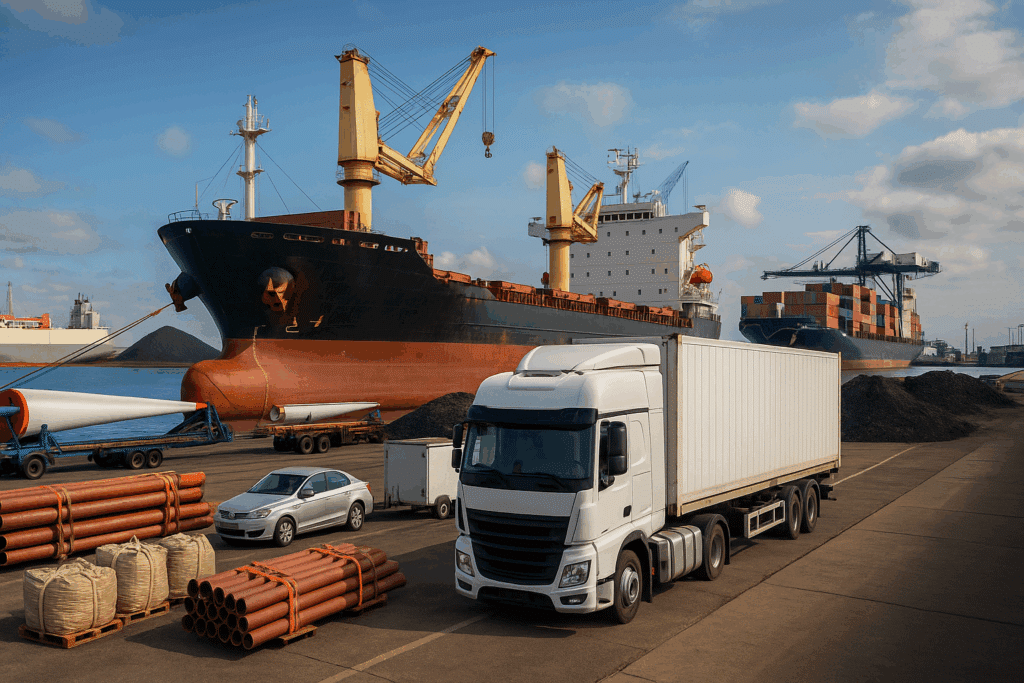In the world of maritime logistics, understanding the different types of cargo is essential to optimize operations, choose the right transport method, and ensure efficiency throughout the supply chain. Each cargo category has unique characteristics that impact how it must be handled, stored, and transported.
1. General Cargo
Refers to goods that are shipped as individual units, such as boxes, pallets, or drums. These cargos require individual handling and are often transported in containers.
Examples: appliances, machinery, textiles.
Characteristics:
- Generally packed or packaged.
- Easy to handle but requires protective measures.
- Can be grouped into standard containers.
2. Bulk Cargo
Goods transported unpackaged in large quantities.
Types:
- Liquid bulk: oil, chemicals, edible oils.
- Dry bulk: grains, coal, minerals.
Characteristics:
- Loaded directly into the ship’s hold.
- Requires specialized loading/unloading equipment.
3. Project and Oversized Cargo
Large or heavy items that cannot be shipped in standard containers.
Examples: wind turbines, heavy industrial machinery.
Characteristics:
- Requires specialized handling.
- Route planning is essential to accommodate size and weight restrictions.
4. Reefer Cargo (Refrigerated Cargo)
Goods that need controlled temperature conditions during transport.
Examples: fresh produce, pharmaceuticals, meat.
Characteristics:
- Shipped in refrigerated containers (reefers).
- Constant temperature and humidity monitoring required.
5. Hazardous Cargo
Materials posing risks to health, safety, or the environment.
Examples: chemicals, explosives, flammable gases.
Characteristics:
- Transport regulated by international standards (IMDG Code).
- Specific labeling and packaging requirements.
- Strict safety handling protocols.
6. RORO Cargo (Roll-On/Roll-Off)
Cargo that is rolled on and off the ship, such as vehicles or wheeled heavy equipment.
Characteristics:
- Fast loading and unloading process.
- Commonly used on routes with high automotive shipping demand.
Importance of Knowing the Types of Cargo
Understanding the differences between cargo types allows you to:
- Select the appropriate vessel.
- Determine the necessary logistics equipment.
- Optimize costs.
- Comply with legal and safety requirements.
Learn more about our maritime logistics services here.
Need advice for your next shipment?
Contact our maritime logistics experts today.


